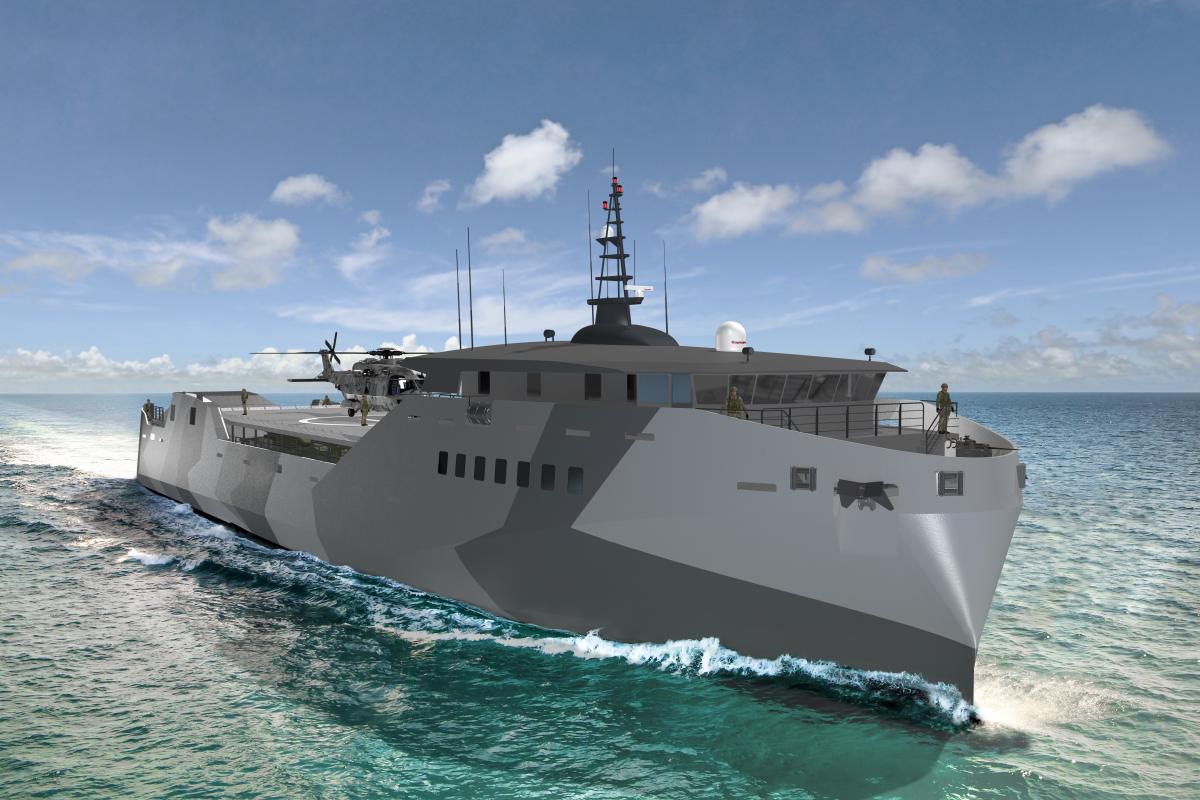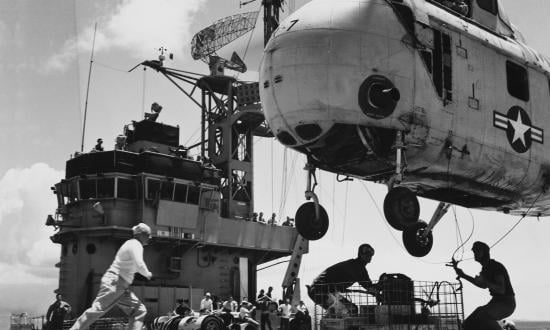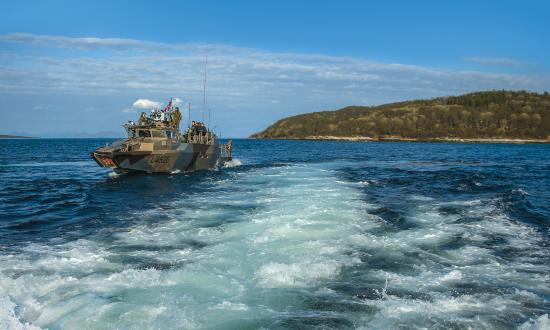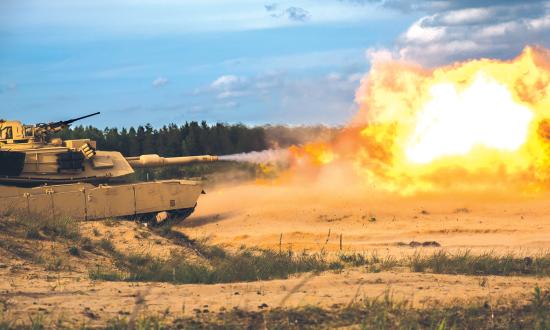The Navy and Marine Corps have proposed a new ship class, the light amphibious warship (LAW), to fill a need for distributed operations and operations in high-threat areas. Although the concept is sound, the designs discussed thus far have limited capability and, because of their large numbers, potentially high costs. Instead, the Navy should buy a small number of ships with the initial design and then experiment. If that design does not work, then it should reconsider, perhaps buying a larger design so there is a full range of amphibious warfare capability.
The concept of a small amphibious ship is sound. Amphibious ships have been getting larger over time. For example, the Thomaston-class LSDs from the 1960s were 13,900 tons fully loaded; the current LSD replacement, the LPD-17 Flight II, is 24,900 tons fully loaded—80 percent larger.1 This has opened a gap that smaller ships could fill.
In addition, as amphibious ships have become larger, they become more expensive and fewer. Whereas there were 60 in the 1980s, there 33 today. Amphibious ready groups (ARGs)/Marine expeditionary units (MEUs) have three ships, and typically split up to cover the many combatant commander demands. Each ship, though highly capable, can only be in one place at a time. A small ship could handle some of these commitments. Indeed, a small ship could handle some commitments better if the requirement were limited or, if an exercise, could be more compatible with the smaller ships of most navies.
Commandant General David Berger made this point about cost and numbers in his Commandant’s Planning Guidance: “We must continue to seek the affordable and plentiful at the expense of the exquisite and few when conceiving of the future amphibious portion of the fleet.”
Finally, but not least important, a small amphibious ship fits with new concepts to address potential conflict in the western Pacific. The Marine Corps wants a “stand-in force,” which requires “smaller, more lethal, and more risk-worthy platforms.” A fleet of small ships could operate forward, within the arc of an adversary’s long-range precision fires.
The Navy has an initial concept for the ship. Navy briefing slides for engagement with industry describe the ship as follows: minimum length 200 feet, crew of no more than 40 sailors, embarkation for least 75 Marines, minimum of 8,000 square feet of cargo area, stern or bow landing ramp, 25-mm or 30-mm gun for self-protection, minimum speed of 14 knots, minimum unrefueled transit range of 3,500 nautical miles, and 10-year expected service life. The total number of ships would be between 28 and 30.
To speed the acquisition process, the Navy is looking for existing ship designs. That is a sensible approach since there are a number of potentially attractive designs out there.
The light amphibious warship may be very small. Although the Navy requirements allowed a wide range on size (1,000 to 8,000 tons), the crew and troop capacity give a sense of the likely ship size. Early descriptions made the ships sound like the De Soto County–class LSTs of the 1960s to 1980s. These were 4,200 tons (light) and carried 379 troops. Artist conceptions published in various media reinforced this impression.
However, a ship carrying 75 Marines is not even the size of a World War II LST: 1,650 tons, 150 troops, 316 feet long, and a maximum 12-knot speed. It is more the size of a World War II landing craft infantry (LCI): 230 tons, 180 troops (but no heavy equipment), 158 feet long, and a maximum 16-knot speed. LCIs were oceangoing but barely. The small size means the LAW will not be suitable for extended deployments. Requirements documents mandate troop deployments in weeks, not months. This is not a ship that can perform six-month global deployments.
The light amphibious ship fleet does not bring a lot of capability. The 30 planned LAWs will be able to carry collectively about 2,250 Marines (75 Marines per ship × 30 ships). One America-class LHA and one LPD-17 Flight I can carry a total of 2,350 Marines (1,650 + 750). The LAWs will carry no aircraft or ship-to-shore connectors. The LHA and LPD can carry a lot of aircraft and some ship-to-shore connectors, depending on the configuration. And at 20 versus 14 knots, the LHA and LPD are much faster.
Cost could be less, more, or the same as conventional ships. One LHA and one LPD would cost about $5.1 billion ($3.4 billion plus $1.7 billion). The cost of the LAW is uncertain. The Marine Corps would like to get each hull for about $100 million. That would imply a total cost of $3 billion, less than the conventional ships.
However, amphibious ships can get expensive as requirements for defensive systems and communications increase to cope with high-level threats and complex operating environments. If the cost of individual ships rose to $170 million each, then the cost of the two packages, LHA/LPD and LAW, would be the same. Given the Navy’s unfortunate history of cost overruns on ship designs, an increase to $200 million per ship would be possible; that would produce a LAW fleet costing $6 billion.
The service life of 10 years is very short. The briefing package to industry specified a service life of 10 years. That would make the ships almost throwaways. To provide 30 to 40 years of capability, the same as conventional amphibious ships, the Navy would need to buy three or four sets. That would triple the cost and make them much more expensive than conventional amphibious ships.
The acquisition schedule is very rapid. The Navy envisions procuring all the ships over four years, beginning in fiscal year 2023. That means the last ship would be purchased before the first ship had made an operational deployment. There is a lot of risk in that schedule.
Recommendation: Move forward but hedge. As noted earlier, buying some small amphibious ships makes sense. Because the Navy has not chosen a design, LAWs could be much larger than the discussion so far has indicated.
However, if the ship design selected is the small 75-troop design, it would be suited for the Marine Corps’ new concepts for island combat in the western Pacific and raiding by light infantry. Maybe it would be a great success. But such a small ship would be inadequate for most other amphibious operations, which is a severe handicap. Perhaps, instead of a valuable new capability, it will turn out to be the 21st-century version of the Pegasus-class hydrofoil fast attack boat, an interesting concept that never worked out in practice and was retired early.
Rather than relying entirely on a single design, the Navy and Marine Corps would be better off buying a few ships, maybe five, and seeing how the concept works out. If a very small ship turns out to have limited application, the services could supplement it with a different, larger design―maybe something like the De Soto County–class (150 to 200 Marines and some heavy equipment) or perhaps even a variant of the Army’s General Frank S. Besson–class logistics support vessels (273 feet long, 4,200 tons, with a bow ramp).
A broad mix of amphibious ships might be best. With a spread of capabilities, the Navy and Marine Corps could meet any requirement with the right tool rather than having some that were too small and others that were too big.
1. Captain John Moore, RN, ed., Jane’s Fighting Ships 1974–75 (London, United Kingdom: 1974), 457–69.






